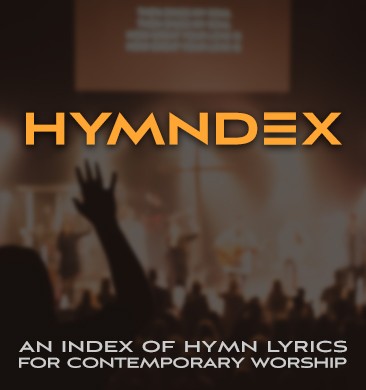A few weeks ago I wrote about how your ministry might benefit from recording. Read the article and watch a video. This week I’ll give you a tour of my home studio and give you some ideas of equipment to be using.
When I first started HymnCharts.com several years ago I figured it would just be a sheet music website – everybody knows the hymns, right? Wrong – I was shocked when I threw my new version of the Thanksgiving hymn “Come, Ye Thankful People, Come” at the praise team and they looked at me with blank stares. None of them knew it!
At that point I realized I had to start recording my arrangements. I decided a long time ago I didn’t want to get into recording – just writing and arranging – but technology has changed so much in very recent years that I decided to reexamine the issue.
My main objection to recording was simply cost: I couldn’t afford a decent studio. I remember a well-equiped home studio I went to in Nashville during the mid ’90s that had several compressor, eq and other effects boxes – one for every channel, and all very expensive.
But now, with everything on computer, what would have cost tens of thousands of dollars in 1995 only costs a few hundred in 2009! So I got a computer and loaded Sonar as my recording software.
To interface with the computer and record vocals and guitars I had an Emu 0404 USB 2 Audio/MIDI Interface. But, being an inexpensive interface, it didn’t have the internal guts to handle heavy vocal usage – louder vocalists would overdrive the circuits resulting in distortion.
Also, I had switched gears in my home office/studio. I moved my entire business production (creating charts/sheet music/business stuff) to my laptop computer and rarely worked anymore in my office on my desktop – instead I’m working in my living room or a coffee shop. In my office/studio my music computer and keyboard were regulated to a corner of the room. I decided this summer to completely redesign my work area and make it a dedicated music studio. What I thought would take a week or two took over two months! Maybe you can avoid my headaches.
First I removed my enormous office desk and hutch. Yuck – the carpet was dirty and steam cleaning didn’t help so I went to the local carpet remnant store and got a nice blue berber (to match my HymnCharts colors.)
After measuring and more measuring I decided on a cool setup of IKEA Billy bookcases. Three trips to IKEA later I finally got it right and set them up. I kept one of my office desks and used it as the center of my workstation – my 20+ year old KX88 piano keyboard controller still works great and fits perfectly under the desk.
Once I had my basic setup designed I then started shopping for new equipment. I started looking at audio interfaces. I bought the new Lexicon I-ONIX U22 because it looked cool. Unfortunately it didn’t work so cool – it made Sonar cough and stutter. After searching online forums I discovered this seems to happening to many Sonar users and the brand new device with brand new audio drivers was the problem – basically the thing just wouldn’t work.
Next I bought an M-Audio Fast Track Ultra. More stuttering and coughing in Sonar.
Exasperated, I decided to go all out and get the near pro-grade MOTU 828mk3 FireWire Audio Interface. (Keep in mind that each new audio interface meant ripping apart my neatly tied cables behind a ginormous desk – as I laid on my back groaning, bruised and aching ribs from a nasty bike fall!) The MOTU has all kinds of bells and whistles. It’s a little bit more complicated than I care for but I’m reasonably happy with it. All this trouble and my old EMU worked without a glitch – so if I had to do it all over again, I’d try to go with a higher end EMU audio system. However, the MOTU does look lovely nestled between my new 24 inch monitors (great deal at Fry’s Electronics.)
Above my monitors sits a Monster MP PRO 2500 to plug in all my gear. Then above the Monster is the ART Pro Channel Tube Mic Preamp and Compressor with EQ. Plug a mic into the ART and it will warm up your vocals and guitars, plus control the sound so you get a good signal going into your audio interface. I’m using Event powered monitors.
I got acoustic foam to deaden the sound in my room at foamorder.com, however a Google search will find many such places – I found one site that made foam in every color imaginable.
Something often overlooked in a studio is comfort. I had a plain old office chair for years and didn’t realize how uncomfortable I was until I sat in a new (more expensive) one. Online research suggested the Herman Miller Aeron is the chair of choice in high end studios but they’re super expensive. I thought I’d get one if it truly was as comfortable as they say. Of course, you can’t find anything like that in Greenville but I found a furniture store in nearby Charlotte NC that had several used Aerons. The used, nasty and dusty Aeron was $600 and I didn’t even think it was as comfortable as a chair I tried at Office Depot. So I got the Quantum Recycled Mesh Mid-Back Task Chair from Office Depot. It’s magic and I can sit unbelievably comfortable for hours (the secret is mesh!) In fact, I just realized I’ve been sitting here for over 3 hours working on this article and haven’t moved a muscle. I also picked up two handy “Zarty” laptop desks.
More gear shown in the video:
Frontier Design AlphaTrack Control Surface
This looked cool when I bought it but it seems to lose sync with Sonar often so I don’t use it much.
Rode NT1A Vocal Condenser Microphone
Event Powered Monitors: I can’t find these online so maybe they’re out of production.




